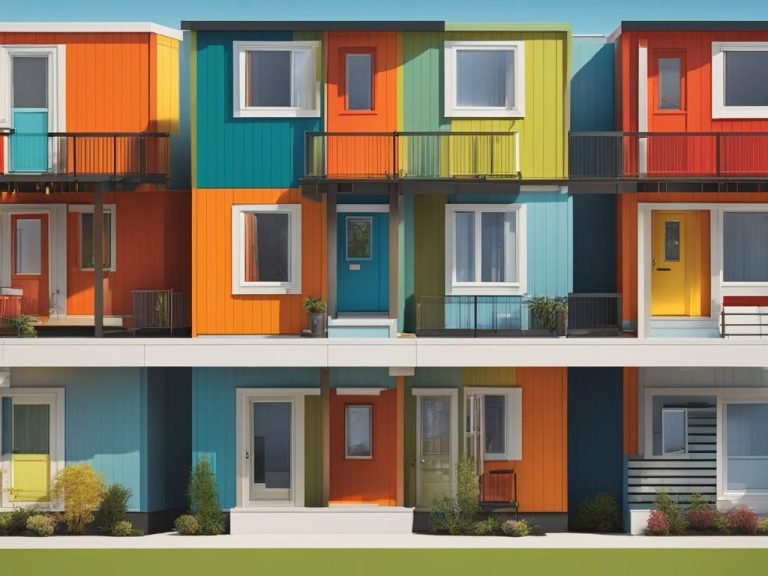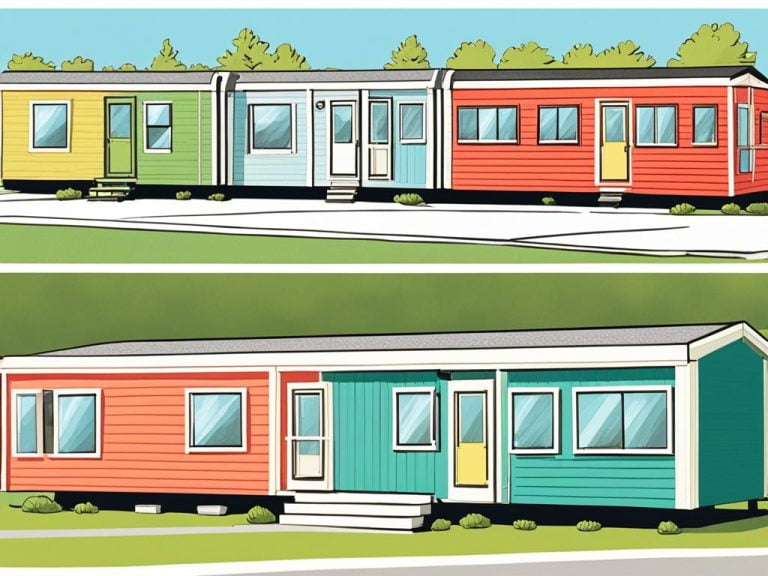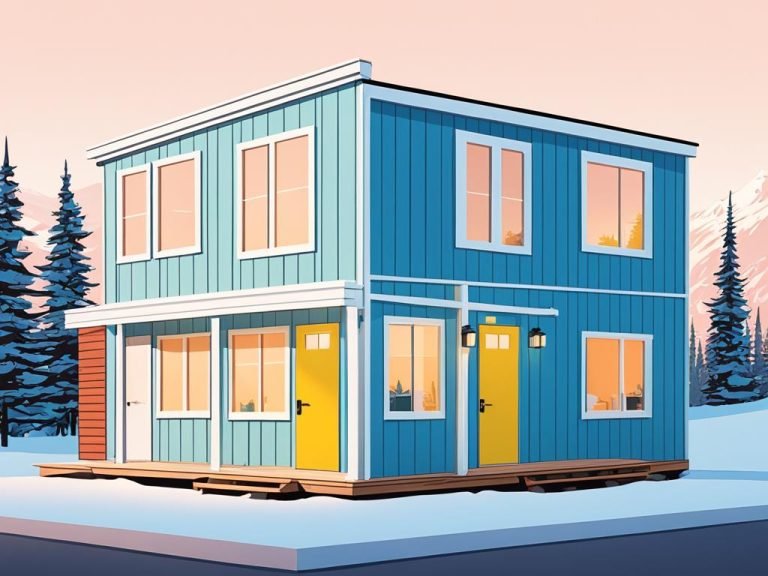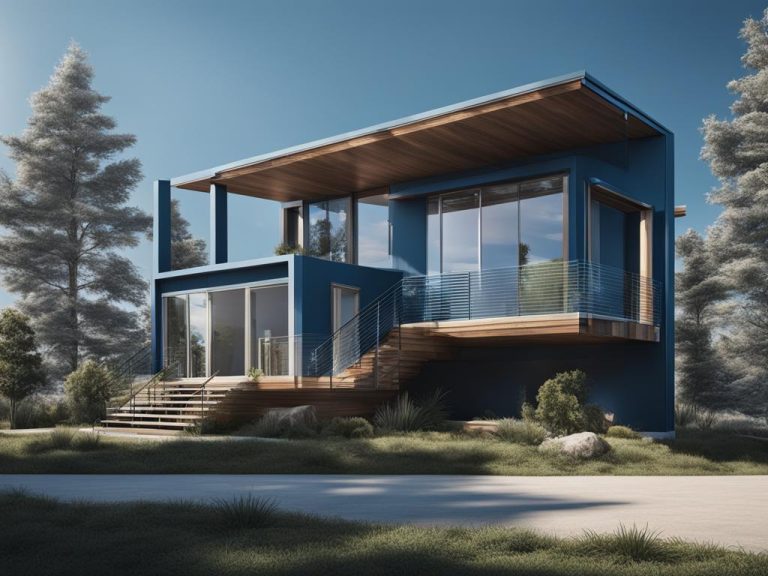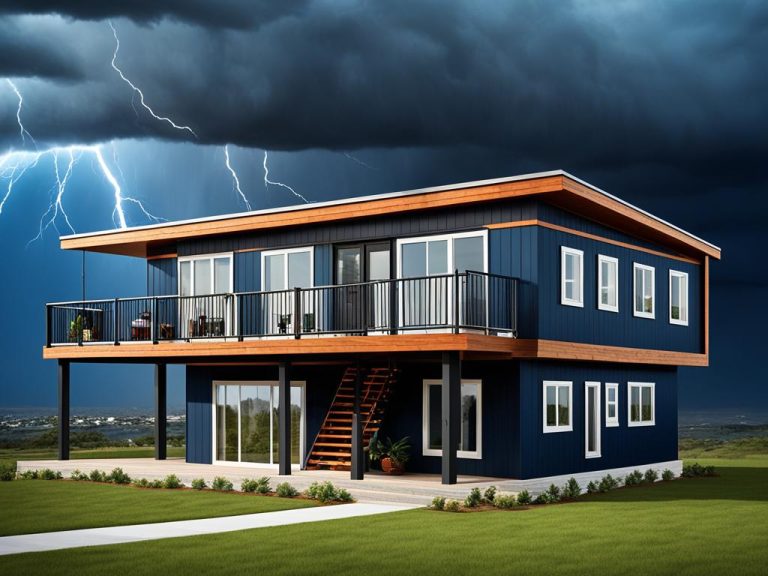Prefab vs Container Homes: A comparison and guide
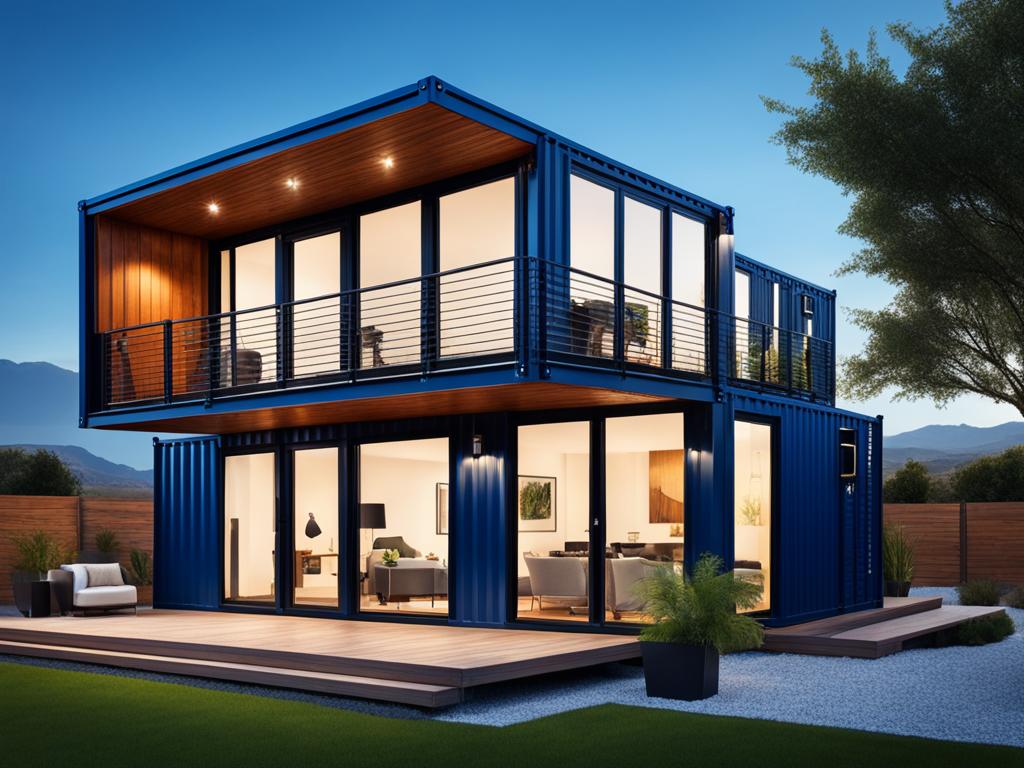
When it comes to alternative housing options, modular homes such as prefab and shipping container homes have gained popularity for their affordability and sustainability. Prefab homes are built using standardized modules or units, while container homes are constructed using repurposed shipping containers. In this guide, we will compare the two options to help you make an informed decision.
Key Takeaways:
- Modular homes, including prefab and shipping container homes, offer affordable and sustainable housing solutions.
- Prefab homes are built using standardized modules, while container homes are constructed using repurposed shipping containers.
- Factors to consider when choosing between prefab and container homes include cost, construction time, durability, customization, and sustainability.
- Container homes can offer cost savings of 15% to 50% compared to traditional stick-built homes.
- Container homes are made from corten steel, which is stronger than wood and offers better durability.
The Quick Comparison: Container Homes VS Conventional Homes
When it comes to choosing between container homes and conventional homes, several factors need to be considered. Container homes have a distinct aesthetic with their corrugated steel exteriors, while traditional homes are built using concrete and wood. Let’s take a closer look at the key differences between these two housing options.
Cost Savings
- Container homes can offer significant cost savings of 15% to 50% compared to traditional stick-built homes.
- By repurposing shipping containers, the construction costs are reduced, resulting in a more affordable housing option.
Construction and Strength

Container homes are constructed using corten steel, which is stronger than wood and provides better durability. This strength allows container homes to withstand harsh weather conditions such as wind and storms more effectively.
The use of corten steel not only ensures a robust construction but also minimizes maintenance requirements over time, making container homes a long-lasting investment.
Faster Build Time
The construction process for container homes is generally faster compared to traditional homes. With standardized modules and streamlined construction methods, container homes can be completed within a few weeks to a month.
This faster build time not only accelerates the move-in process but also reduces potential construction delays and associated costs.
In the next section, we will explore the different types of container houses available and their various uses.
Shipping Container House vs Prefabricated Container House
When it comes to container houses, there are two main types to choose from: shipping container houses and prefabricated container houses. Both options offer a range of benefits and can be customized to suit various uses and architectural styles.
Shipping Container House:
Shipping container houses are incredibly versatile and can be used for a wide range of purposes. They can be transformed into storage container buildings, high-rise container office buildings, container apartment buildings, restaurants, malls, and hotels. With their sturdy construction and customizable features, shipping container houses offer endless possibilities for innovative and unique designs.
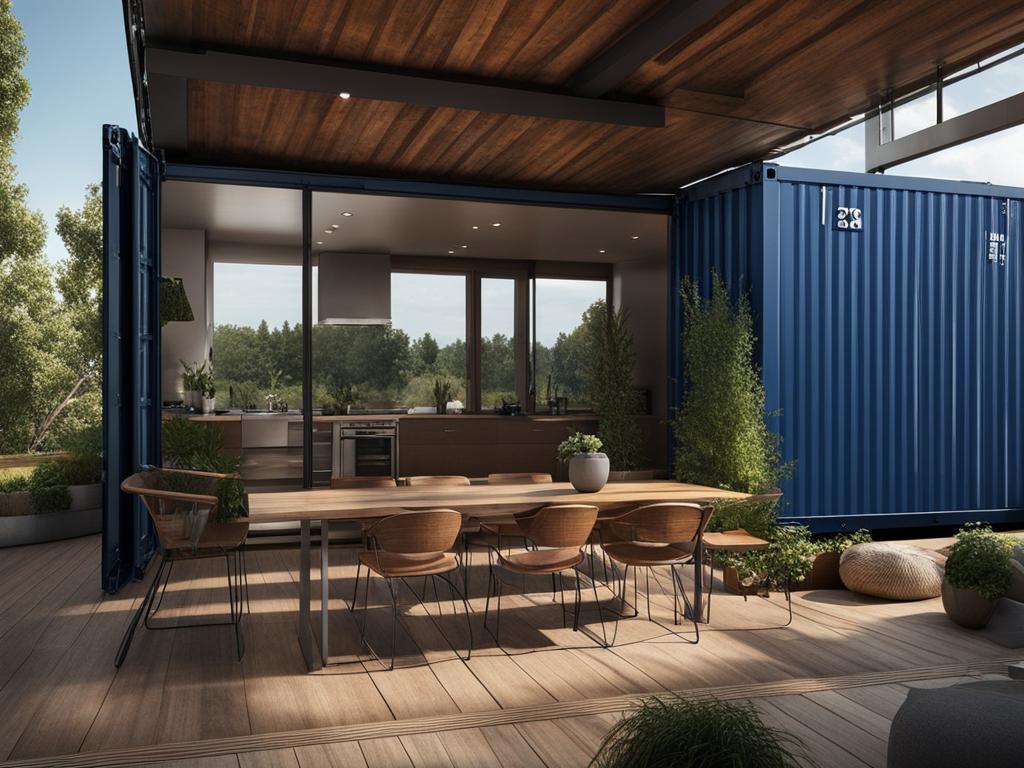
Prefabricated Container House:
Prefabricated container houses offer modular container buildings, small budget houses, mobile homes, townhouses, 2-story modular homes, luxury prefab homes, and simple office buildings. These houses are designed with convenience and efficiency in mind, allowing for faster construction and easier assembly. Prefabricated container houses are highly customizable, allowing homeowners to personalize their living space according to their preferences and architectural needs.
Both shipping container houses and prefabricated container houses provide customizable options that can be tailored to suit individual preferences. Whether you’re looking for a modern and sleek design or a more traditional and cozy feel, container houses offer the versatility needed to create a home that reflects your unique style.
With their ability to be used in various ways and their customizable features, container houses are an attractive alternative to traditional housing options. Whether you’re seeking a cost-effective solution, a sustainable living space, or a unique architectural design, both shipping container houses and prefabricated container houses offer a range of benefits that can meet your needs.
Cost: Construction & Installation
When it comes to comparing the cost of construction and installation, container houses have a clear advantage over traditional houses. Container houses can save you anywhere from 15% to 50% compared to the cost of building a traditional house. In the Philippines, for example, traditional house construction costs can range from 20,000 PHP/sqm to 60,000 PHP/sqm, while a prefab container house can cost a minimum of 15,000 PHP/sqm.
However, it’s important to note that the cost of container homes can vary depending on several factors. Size, design, layout, the number of containers used, and the level of customization required all play a role in determining the final cost. It’s always best to consult with a professional contractor or builder to get an accurate estimate based on your specific needs and preferences.
Overall, container houses offer a more cost-effective alternative to traditional construction methods. By maximizing the use of repurposed shipping containers, you can significantly reduce construction costs while still enjoying a stylish and functional home.
Cost Comparison
| Types of Houses | Construction Costs (in PHP/sqm) |
|---|---|
| Traditional Houses | 20,000 – 60,000 |
| Prefab Container Houses | 15,000 and above |
As shown in the table above, container houses offer a lower cost alternative to traditional houses, making them an attractive option for those on a budget or looking to minimize construction expenses.
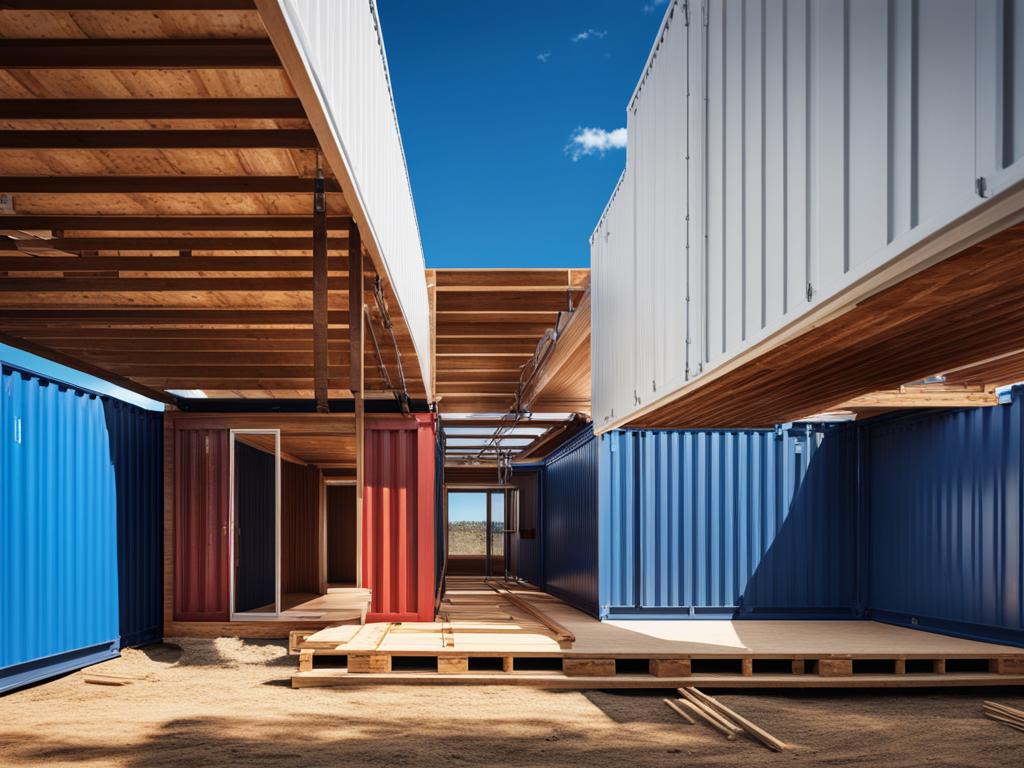
Strength and Longevity
Container homes are built using corten steel, a weathering steel that offers exceptional strength and durability. This material is highly resistant to rust and corrosion, making it ideal for withstanding harsh weather conditions such as hurricanes, strong winds, earthquakes, and tornadoes. The use of corten steel gives container homes an inherent structural integrity, ensuring they can withstand the test of time.
With proper construction and maintenance, a container home can have a lifespan ranging from 15 to 50 years. The durability of corten steel contributes to the longevity of the structure, allowing it to endure the rigors of daily life and external forces. However, it is important to note that the quality of construction and regular upkeep play a crucial role in determining the lifespan of a container house.
Like traditional homes, container houses can experience depreciation over time. However, the use of corten steel and proper maintenance can help preserve the value of a container home. Regular inspections, repairs, and repainting can prevent corrosion and ensure that the structure remains in excellent condition. Ultimately, container homes offer a long-lasting housing solution that can provide both strength and sustainability for many years to come.
Key Points:
- Container homes are constructed using corten steel, a weathering steel that provides exceptional strength.
- Corten steel makes container homes highly resistant to rust, corrosion, and damage from harsh weather conditions.
- The lifespan of a container house can range from 15 to 50 years, depending on construction quality and maintenance.
- Regular maintenance, inspections, and repainting can help prevent corrosion and preserve the value of a container home.

Conclusion
When it comes to affordable and sustainable housing, both shipping container homes and prefab modular homes offer viable options. Shipping container homes are a cost-effective choice that combines sustainability with a unique look. With their repurposed shipping containers, they provide a creative architectural solution while being customizable to meet individual preferences. On the other hand, prefab modular homes excel in terms of quality and durability. They are built using standardized modules or units, ensuring consistent construction standards and structural integrity.
When deciding between shipping container homes and prefab modular homes, it is crucial to consider various factors. Sustainability is a key consideration, with both options contributing to the reduction of waste and the use of recyclable materials. The desired aesthetic is another aspect to think about, as shipping container homes have a distinctive look due to their corrugated steel exteriors, while prefab modular homes offer a more versatile appearance.
Price and building time are also important factors to weigh when making a choice. Shipping container homes often have a price advantage, with potential savings of up to 50% compared to traditional construction. Moreover, their shorter construction time can expedite the process of moving into a new home. On the other hand, prefab modular homes offer higher quality and longevity, ensuring a solid investment in the long run.
In conclusion, whether you opt for shipping container homes or prefab modular homes depends on your priorities and requirements. Consider factors such as sustainability, the unique look you desire, as well as price and building time. Both options offer affordable and sustainable housing solutions that cater to different preferences and needs, providing a contemporary and eco-friendly alternative to traditional housing.
FAQ
What is a container home?
A container home is a type of alternative housing that is constructed using repurposed shipping containers. These containers are modified and transformed into livable spaces, offering a unique and environmentally friendly housing option.
What is a prefab home?
A prefab home, also known as a prefabricated home or modular home, is a type of housing that is built using standardized modules or units. These modules are constructed off-site and then transported to the building site for assembly, providing a cost-effective and efficient housing solution.
What are the advantages of container homes?
Container homes offer several advantages, including cost savings of 15% to 50% compared to traditional stick-built homes, faster build times of a few weeks to a month, and durability due to their construction using corten steel, which is stronger than wood.
What are the advantages of prefab homes?
Prefab homes offer advantages such as better quality and durability compared to container homes, as well as the ability to customize and tailor the design to suit individual architectural styles and needs.
Can container homes be customized?
Yes, container homes can be highly customized to suit individual preferences and needs. They can be tailored to different architectural styles, layouts, and sizes, allowing for flexibility in design.
Can prefab homes be customized?
Yes, prefab homes can be customized to a great extent. They offer a range of options in terms of design, layout, and finishes, allowing homeowners to personalize their space according to their preferences.
Are container homes more cost-effective than traditional homes?
Yes, container homes can offer cost savings of 15% to 50% compared to traditional stick-built homes. This is due to factors such as the use of repurposed shipping containers, which are readily available and affordable building materials.
How long do container homes last?
The lifespan of a container home can range from 15 to 50 years, depending on the quality of construction and maintenance. Proper maintenance and the use of corten steel, a weathering steel that is resistant to rust and corrosion, can help extend the lifespan of a container home.


